

Page


Page
© Luc Dartois - May 2019
updated in October 2019, November 2020
A subway train arrives between two rows of buildings under heavy rain.

September 2019
Marsh 2019
September 2019
Marsh 2019
September 2019
Marsh 2019
~
~
~
~
~
~
~
~
~
~
~
~
... And the rain has been densified.
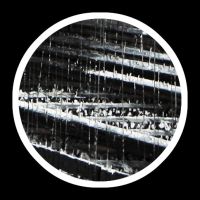
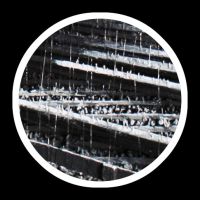
Other areas of light have been reworked as well...
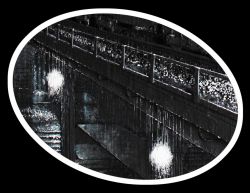
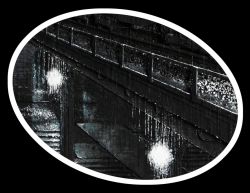
In order to deliver the canvas right in time for the New York exhibition in April 2019, few zones of the painting have been left unfinished.
The canvas has been reworked later during two periods: in July and in September.
On the right side of the buildings, the shadow has been densified in order to close the right outside edge. While the light has been intensified and concentrated at the same time.
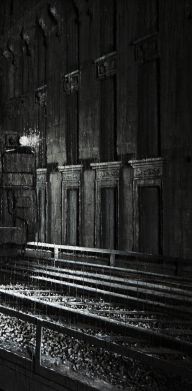
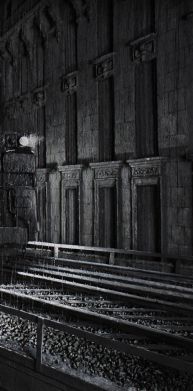

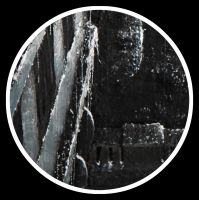
The chromatic scale is coming from a limited number of paints, but theyr combination with dry pigments and matters is finally giving a wide range of shades.
The two main chromatic masses are consisting of whites and blacks, while the intermediary greys, mostly present on the buildings, get a smaller place. It result in extremly intense bright and dark portions.
A first colouring with wood stain has been applied (cement, ballast and sleepers). This very fluid dye enters deep into the matter and create an homogeneous dark mass. Resin (shutters, subway train, viaduct, water) has been mixed with ivory black dry pigment. The painting phase start only after this first colouring phase.
© London Film Productions
© Gaumont-Pathé
© Onyx Films, Millimages
© Dimension Films, Troublemaker Studios
2005, 2014 - Sin City
Robert Rodriguez and Frank Miller
2006 - Paris 2054, Renaissance
Christian Volckman
1955 - Raid on the Dope
Henri Decoin
1949 - The Third man
Carol Reed
Carceri Plate VII – The Drawbridge.
The planes arrangement is matching with the masses of matters arrangement.
Four main masses of matters are arranged in the composition. Double mass of cement for the buildings, mass of cotton in the sky, and two composite masses: one made of wood, grits, resin, which represent the main part of the foreground, and the other one made of cement, wood and resin for the lower plane.
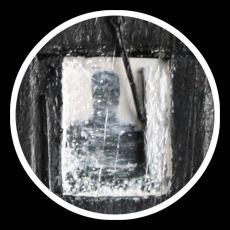
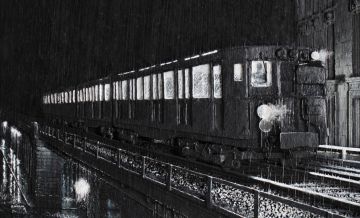
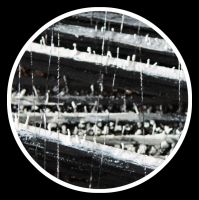
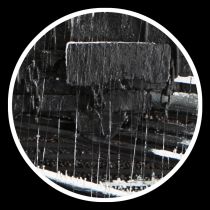
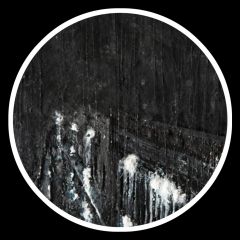
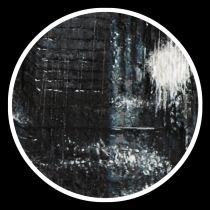
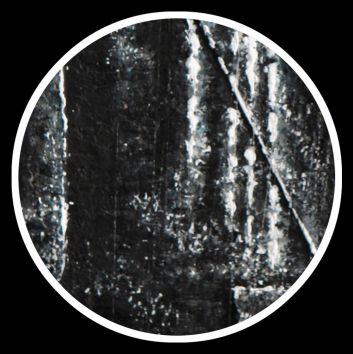
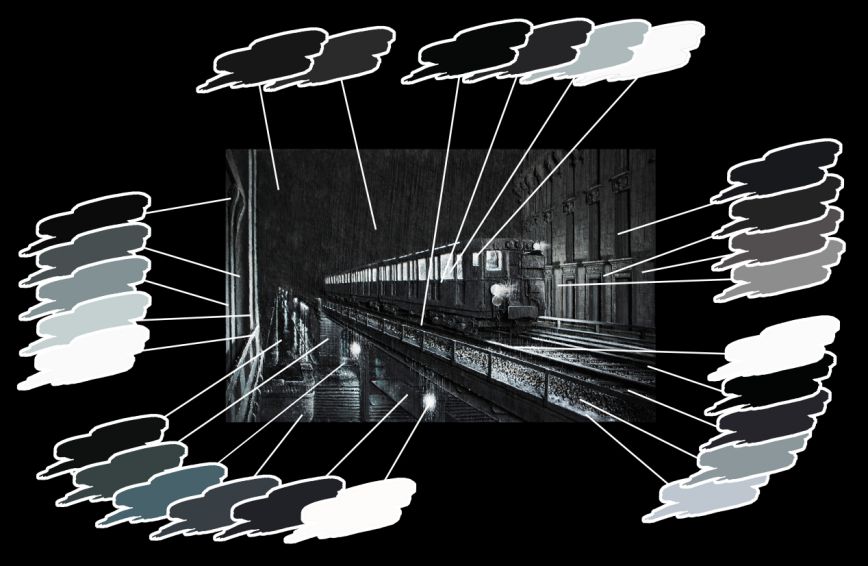
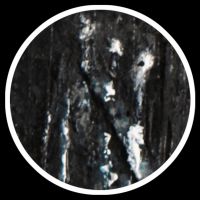
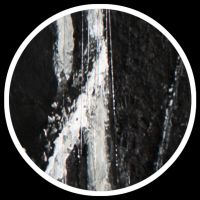
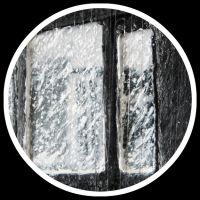
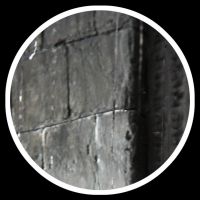
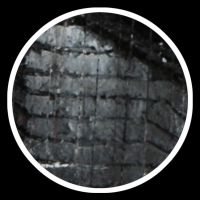
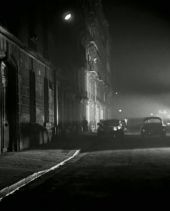
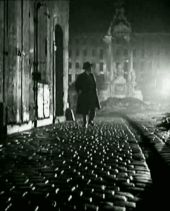
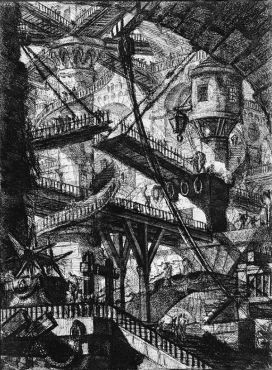
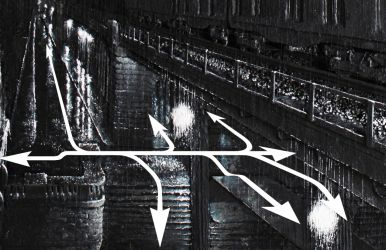
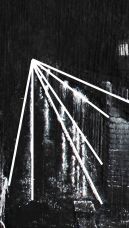
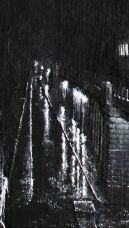
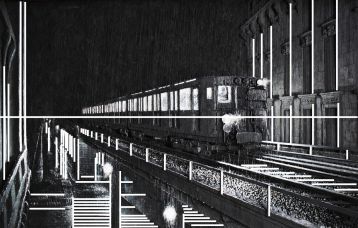
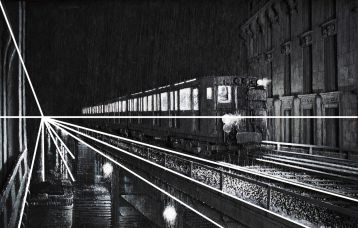
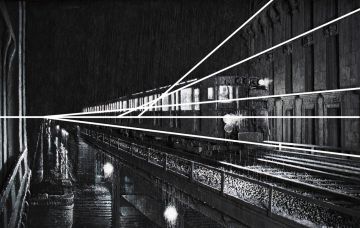
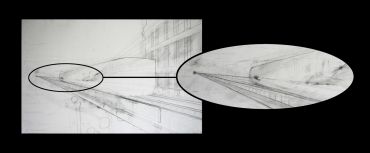
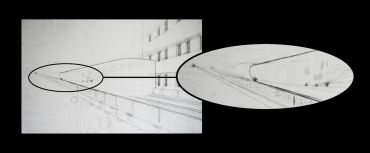
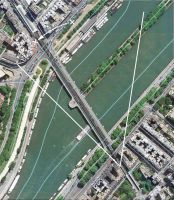

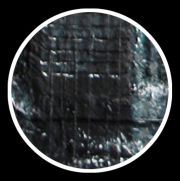
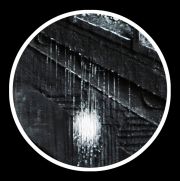
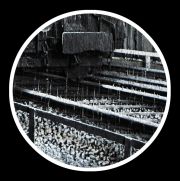
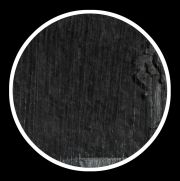
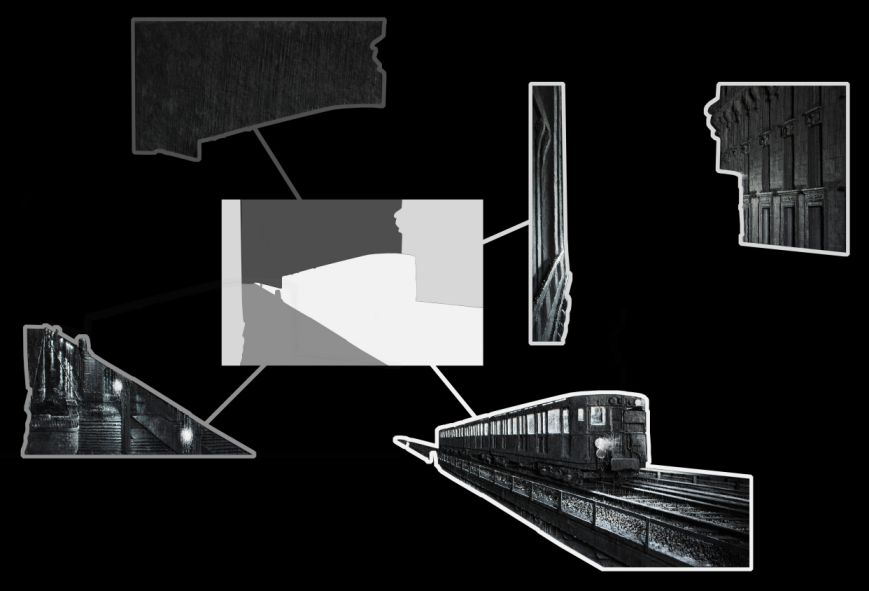
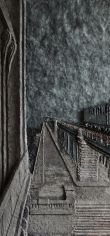
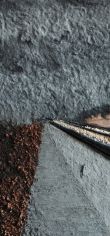
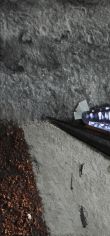
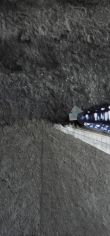
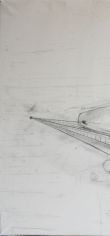
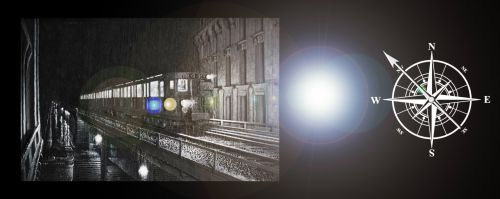
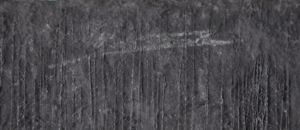
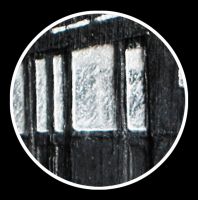
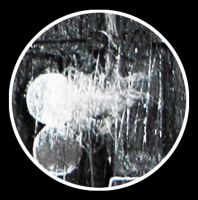
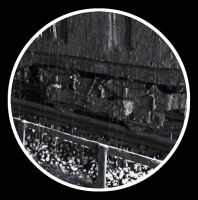
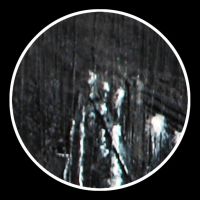
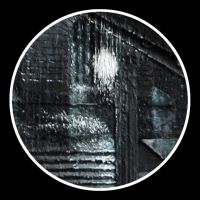
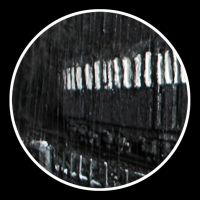
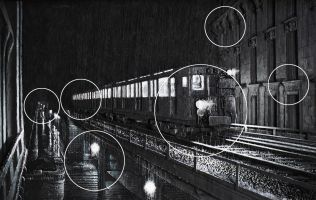
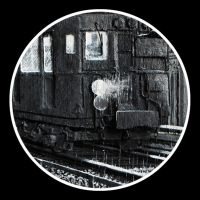
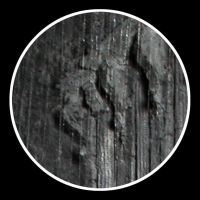
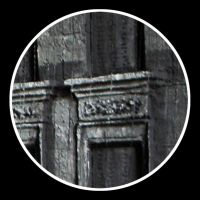
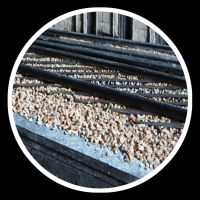
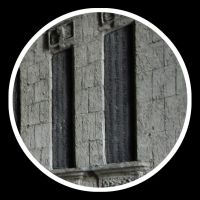
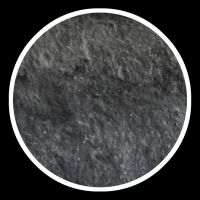
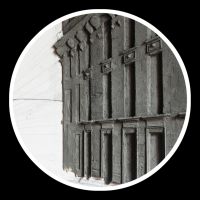
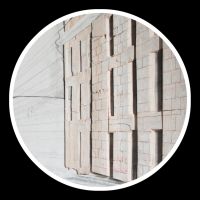
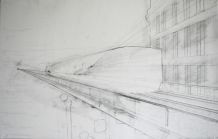
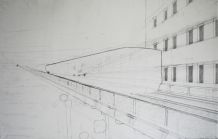
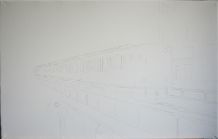
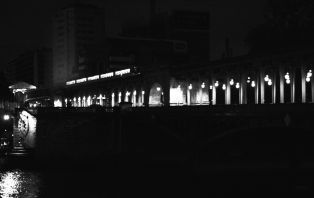
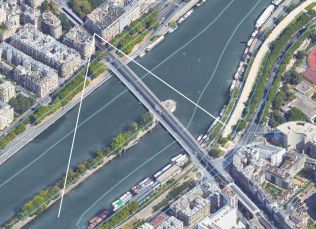
Where will Man go when the last metro will be gone?
Thus, the bridge can be seen as a link between invisible world and physical world, a link between past and present, a passage between life and death.
The only living person in the canvas is the viewer itself but is that really the case? The positioning of the source point of the look indicates clearly a zero gravity state.
The absence of human presence lay a basis for philosophical reflections on abandonment, emptiness, collapse... On the place that will be left to humankind while another era of massive extinction is starting, caused by humanity itself.
The choice of an ancient model of a Sprague-Thompson trainset is not coming from nowhere. It creates a link to the past. History is not only cyclical, it is also linear.
The subway train is empty, only the metro driver is showing a presence which has to be wondered if it's really a human presence. Every driver is a ferryman. Today he is driving a subway train. In a more distant past he used to cross the River Styx on his ship.
The pouring rain seems to be the only living element of the canvas. It plays a special role, both pictorial and symbolic. It unify the different masses of matters, but also symbolize the dissolution of certainties, the ephemeral. No other presence is disturbing the crackling of the raindrops, inspiring a feeling of calm close to fullness. Time is suspended.
We are already on a passage between two worlds.
Black is playing here the main role, it invades the whole space of the canvas until it reaches an almost organic consistency. The bright parts are leaking, they're turning off in the background and focus on the descending diagonals of the foreground.
The macrophagic black announce a return to obscurantism, a prelude to a disaster.
A simple light effect is worth an History book.
On the other hand, light is made of dense touches of matters, which allow to create reliefs that will catch and reflect the outside light.
The micro-reliefs of the matter act as light traps that will capture and bounce the external light.
The most intense touches of light are always laid on the darkest zones of black, which give a maximum range between the white (a mix of plaster, glue and titanium white dry pigment) enhanced by external light, and the black of the drop shadows coming from volumes of matters.
The outside light is always included in the canvas composition. In the actual case, a frontal orientation is recommanded with a slight offset on the left, in order to lightly drop the shadow of the subway on the right buildings, but without loosing the brightness of the glares on the left buildings. The left row of buildings shouldn't be less lighted then the right buildings.
The way the outside light is directed can give very different visions of the artwork.
Humbrol paints have been used. This is glycerophtalic enamel paints whose very thin pigments are very resistant to light. This king of paint can also stick on almost every possible surface, even on glass.
The paint is used diluted, which gives very fluid layers and barely visible touches. Fluidity of the paint is crucial to preserve matters' textures. Textures are creating vibration, which is the usual role of the colours.
Reference to the light of films noirs and neo-noirs or tech-noirs is very clear. Matters has been used to densify contrasts much more then it would be possibly done with pigments only. They give density and presence to shapes. Without matters, no external light reflection and no drop shadows.
Furthermore, the composition has been inspired by a scene from Henri Decoin's movie "Between eleven and midnight" (1949).
On the lower plane, the ground itself seems to shrink by diving in the void. Streets under the bridge appear as a labyrinth structure which can remind Piranese' carceri.
“The labyrinth myth is a dual representation of Man and its condition : it represent the Man, obscure to himself, who is getting lost while pretending that he know himself. It symbolizes human soul in its full complexity, containing the evil in its most intimate part (that way can be interpreted the image of the monstruous creature locked in the heart of the labyrinth).
Labyrinth also represent Man facing the universe : lost, ignoring where he's coming from, where he is, where he goes, and trying to extricate himself from this state, in other words searching responses to his questions. Therefore the labyrinth can be sawn as a metaphor about life : the flight of Daedalus and Icarus can be interpreted as the rise of the spirit to the knowledge, or the rise of the soul to spirituality, which allow to escape from confinement and nonsence of human condition.” Wikipedia
Eyes are firstly catched by light sources of the foreground. But the diagonal bundle create a spring effect which throw back the viewer's sight to the background, where void cover light.
The center of the universe of the painting is located on an always moving infinite.
The street lighting is in large part turned off. Only seven light bulbs out of thirty are still working.
Combined to a complex system of vertical and horizontal lines, the whole canvas gives a sence of stability. But this feeling is misleading.
The skyline is placed almost at the center of the canvas.
A radiating diagonal lines bundle is throwing the vanishing point in a place which seems to go farer then the canvas itself. The viewer sight is litteraly drawned towards infinity.
The building block on the right side received a perspective with several vanishing points, visible on the preparatory drawings. The drawing has been modified for a single vanishing point perspective. But lately, the multiple vanishing points have been restored in order to keep a motion dynamics and an envelopping effect. This mass being itself flooded by the black coming from the sky, the envelopping effect is doubled.
The vanishing point has been moved from the center to the left, which places the viewer in a location where it's physically impossible to stand.
Forms have been purified in order to clean the unnecessary details. Similarly, the row of buildings in the background has been removed. This reinforce the general atmosphere of abandon that emanates from the canvas.
Lastly, a fifth mass made of wires coated with glue simulating the rain is spread all around the surface. These wires are both merged in the background and offset relative to the canvas. This displacement allow to get raindrops suspended in space.
Pentimenti-traces and retouches exist. The left part, firstly left free, has been developped during the progress of the canvas.
Continuous evaluation and assessment is an essential part of the construction process.
Work is being done with daylight coming from the right, South-East exposure. Artificial light is being used for easy parts of the canvas.
During all the construction process, the canvas is permanently examined with mirrors and photos. During the final phases of the construction, the canvas is examined under different lightings at every moment of the day, with different exposures, under artificial light...
Signature has been affixed with a stamp in the top left in a similar tone to the background, in order to avoid interference with the light. The canvas is dated and conter-signed on the reverse side with the list of used components.
The subway train has been made separatly from the canvas before being sticked. The different parts have been cut out piece by piece in balza wood before assembly.
The whole trainset has been coated with a layer of cement in order to change the wood texture, then recovered with a mix of resin and ivory black dry pigment before installation of the glasses and theyr colouring.
Details (headlights, door handles, ...) have been added after. A final applying of a transparent resin layer allow to simulate the flooding of the rain. The lighting is being done during the final phase of the artwork.
Precision of engraving and level of details are accorded to the perspectives layout. The foregrounds are precisely engraved, while the level of details diminish as we're moving farer on the background.
This allow to restitute the equivalent of an atmospheric perspective (with pigments, it's a fading of details combined to a de-saturation of the colours). The subject is emerging without loosing its anchorage in the canvas.
Carving is made for the bigger part with a cutter blade by successive additions and removals of matters. Finger, nail, paintbrush can sometimes be used for final phases of engraving.
Once the first coats are laid, real size printed templates are used during the laying of the next masses.
Afterward, the different pictural elements with theyr corresponding matters are added during the construction process: cement, cotton, wood, resin, sand, grits, transparent plastic cards...
There is always a correlation between texture of the matters and the forms that they represent: mineral matters for the walls, smooth texture for rails and sheet-metal, wood for ties, cotton for cloud layers...
Every texture is having its own vibration and play the role undertaken by colours in canvases made of pigments only. Matters interact between one another the same way the colours does between themselves.
Matters symbolism find itself its matching: mineral matters of the buildings and vertical structure giving seating and stability to the canvas, organic vaporous matters formless but with perceptible movement giving dynamism, synthetic polyform matters able to represent metal or glass as well as water, so both solid and liquid elements...
First underlayers of matters are placed after the drawing, which allow to get the first shade masses.
In the case of masses requiring heavy volumes of cement, a pre-volume of balza wood is applied before, in order to lighten the final weight of the canvas. This technique has been introduced with the "National Assembly" in 2012.
The cotton mass in the sky requires a special way of implementation. Cotton is not sticked, it is embeded in paints. Adhesion on the surface is occuring during the drying process. Then several coats are required to get the desired texture and density.
Coats of matters are laid following an already used scheme: from the farest to the closest. The laying order is following the planes layout. Darker parts are pigmented first, light is laid at last.
Made on a prepared off-the-shelf fine-grained canvas, a pencil drawing sometimes enhanced with black chalk is used as a starting point for the construction itself. It allow to fix the main composition lines, and to size the masses of matters that will be added in a next step.
Every matter match with one or several different techniques. Theyr combination requires an ensuring consistency which is most oftenly done with pigments during the colouring phase. Pigment play a uniting role.
Canvases are thus worked and reworked until a satisfactory result emerges. It can go as far as the completion of paintings started more then twenty years before.
In the end, canvases are never completly finished, they are left in theyr current state once they are achieved enough to be self-contained.
This explain not only the very great rarity of this kind of artwork (average production is of two or three paintings per years actually), but also the impossibility to replicate them identically, which excludes the possibility of fakes that could be mistaken with an original.
“A painting is finished when the artist says it is finished." Rembrandt
Themes are always subject to a very careful preparation, before the first pencil stroke is even drawn. One or several photo sessions are necessary, added with satellite views in order to get an overall view of the subject.
Canvases are never painted spontaneously during a sketching trip, but are considered very carefully. Even though a subject can be spontaneously or instinctively chosen.
Choice of the point of view, preparative photos sessions and/or preparative drawings, preliminary work of framing and composition are carried out before. This preparation can take from few days to several weeks.
The development of this painting has been long. It has been achieved during the whole second half of the year 2018 and the first months of 2019, amounting a bit more then eight months of work.
It has been exhibited for the first time in New York in April 2019, then in Paris in October 2019, early March 2020 and June 2020.
Bridges and railways thematics are also recurring subjects.
2016-2017 - Paris, Eastern Railway Station
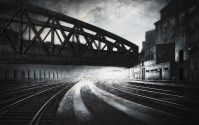
2017 - The Casino
2017 - I salute you old Ocean!
2011 - The Banks
1996 - The Street
1996 - Two trees under the rain
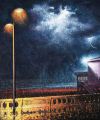
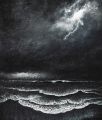
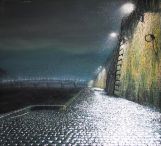

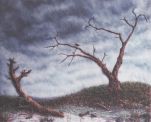
Rain is omnipresent in the canvas, it is even a central theme. This theme appear in the years 1995-96 then recurs regularly.
The only lights are coming from street lighting and from the train. Streets are deserted, all the windows of the buildings are closed. On the background, the sky is forming a dark compact mass.
We are in front of the Bir-Hakeim bridge in Paris, just outside the Passy metro railway station. The metro is a Sprague-Thompson trainset, which was in circulation until the 1970s-80s.
The painting is in black and white, its size is 95cm long for 60cm high without frame.
It takes a parisian landscape as geographical basis, which is an immediate environment of the artist and a main source of subjects since 2010-11.
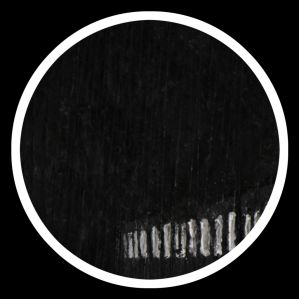
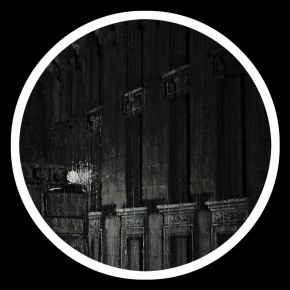
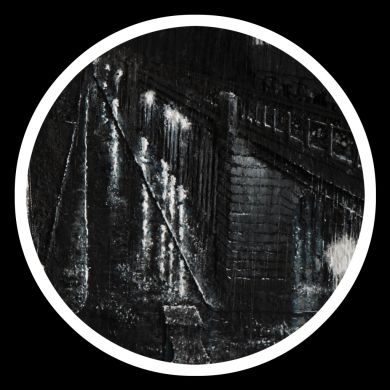
2018-2019 - Nowhere
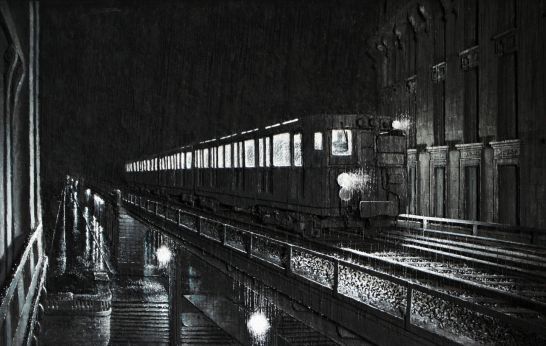
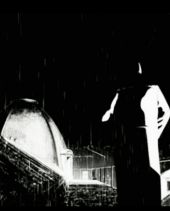
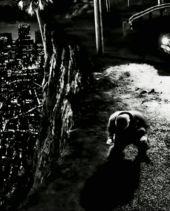






Fr
Eng
Paintings and matters on canvas
Luc Dartois

Pictures, texts, videos, illustration and logos contained on this website are exclusive property of Luc Dartois.
Any other use then strictly private use, any public distribution without author's permission iis prohibited.
Copyright © Luc Dartois